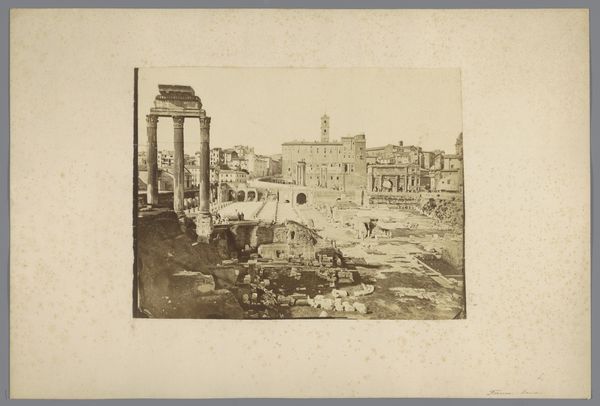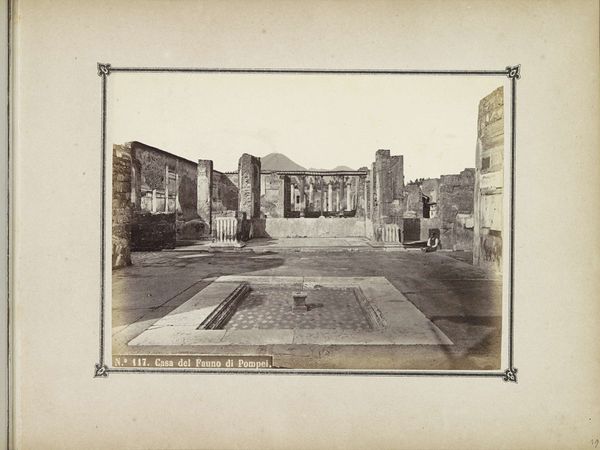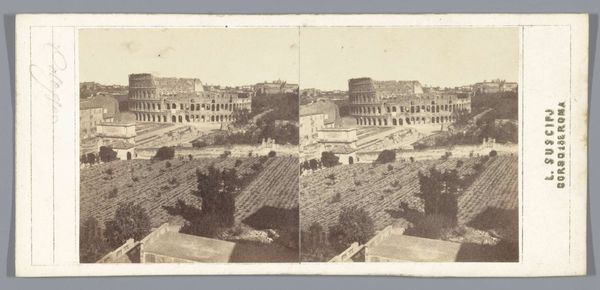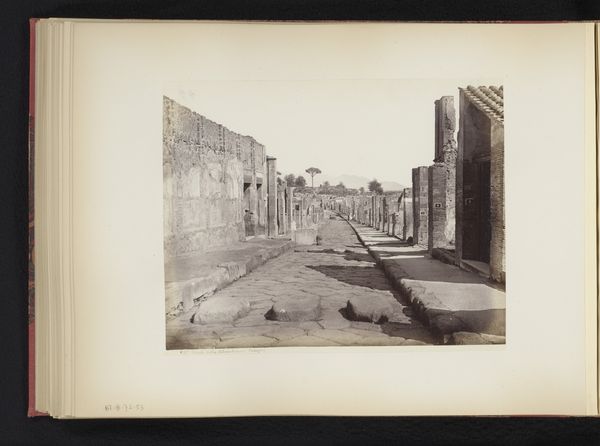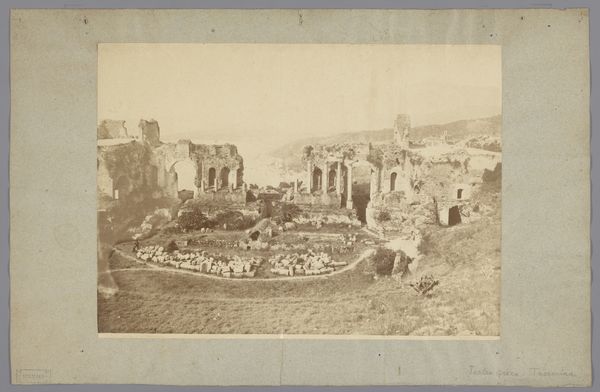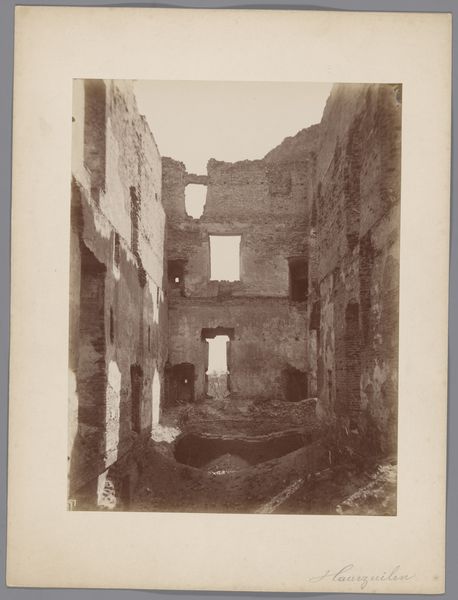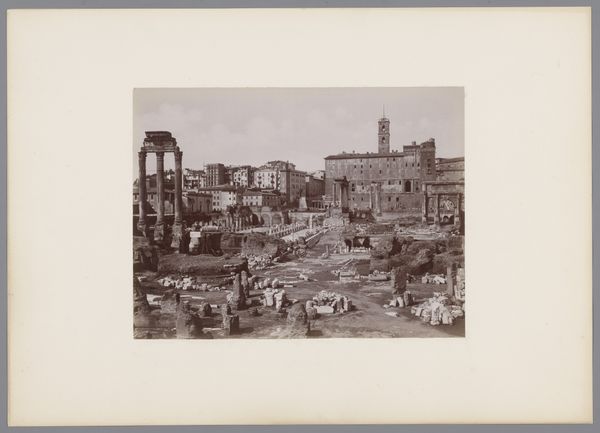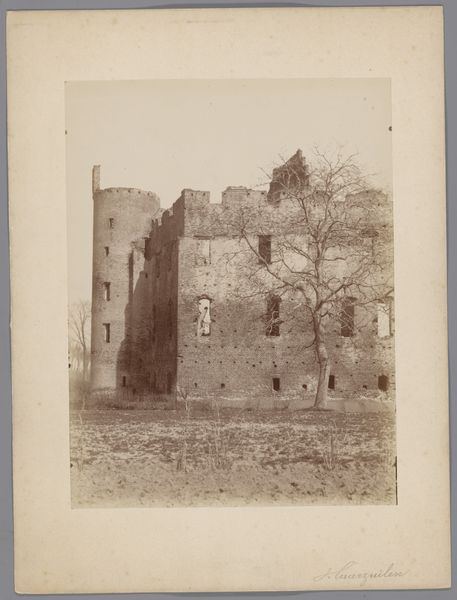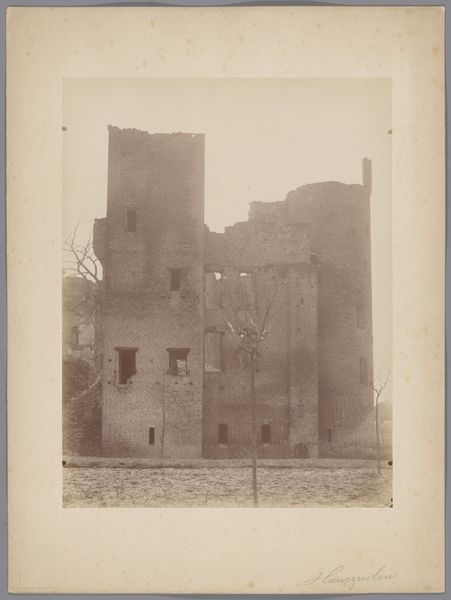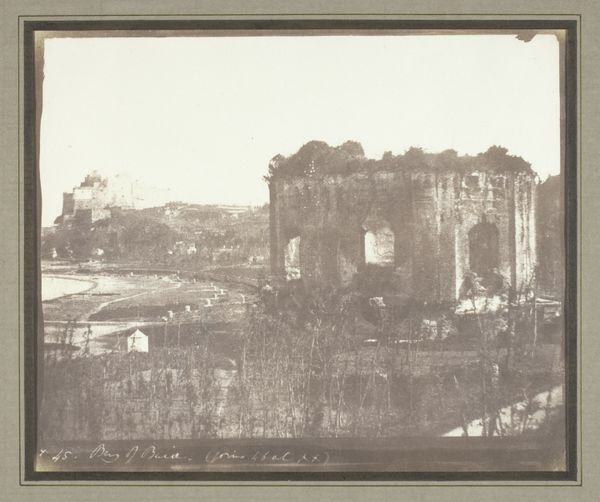
silver, print, daguerreotype, photography
#
16_19th-century
#
silver
# print
#
landscape
#
daguerreotype
#
photography
#
orientalism
#
france
#
cityscape
#
realism
Dimensions: 33.4 × 24 cm (image); 35.5 × 28 cm (paper)
Copyright: Public Domain
Curator: Immediately striking, isn't it? A towering mass, almost oppressive. Editor: That's Charles Nègre's daguerreotype, "The Pope's Palace, Avignon," circa 1851-1870. Held here at the Art Institute of Chicago, it’s a silver print, documenting the architecture. The detail captured is remarkable, given the process. Curator: Daguerreotypes—so fascinating as early technologies and reproducible images. Thinking about the labor, the preparation of the silvered copper plate, the long exposure times needed... Editor: It does conjure the patience of the man behind the lens! The light is stark, emphasizing the immense scale. It’s not just a palace; it's a fortress, both grand and unnerving. I imagine the streets empty, a profound silence clinging to the stone. Curator: That somber tone reflects larger discussions of urban development, and also the accessibility of art. Photography democratizes image-making—it takes image production out of the academy and traditional fine art studio. Suddenly buildings become subjects accessible to larger public consumption, reproducible in multiples as part of a visual archive of Europe’s changing cities. Nègre worked meticulously with these materials, understanding light as almost a raw building ingredient itself, crucial for making the forms cohere into this arresting visual statement. Editor: Absolutely. There's something elemental here. Thinking of process: the alchemy involved... it transforms not only subject, but also the perspective. Photography, like painting or sculpture, mediates reality. This work whispers to our deeper fears of authority. The papal seat itself feels almost deserted, maybe suggesting a critique or doubt cast at established religion's place. Curator: Certainly. Its impact stems as much from how these specific materials were handled, manipulated under precise conditions, as what the image depicts directly. This material evidence is essential to its significance. Editor: Seeing it this way changes things. Thanks for peeling back those layers, those darkroom processes… it illuminates Nègre’s intent beautifully! Curator: My pleasure. Understanding process is understanding power and purpose.
Comments
No comments
Be the first to comment and join the conversation on the ultimate creative platform.
